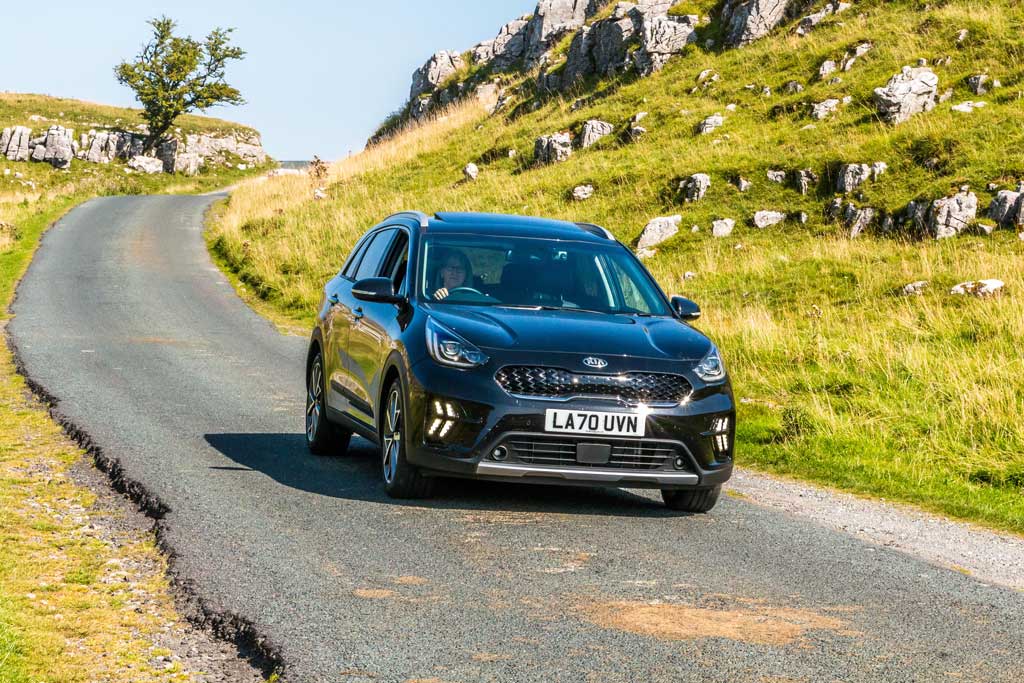
The whole point about a hybrid is that they’re easy on mpg and emissions. They’re popular in cities because who wants a full EV when there aren’t enough public chargers, and you can’t guarantee parking outside your home in order to trip people up with an electric cable across the pavement.
So it’s been gratifying that since taking delivery of the Niro in June, the mpg has been steadily improving. Kia claims 53.3mpg officially, so it was disappointing that the first reading was 48.8mpg. That said, its first trip was to Cornwall and back on holiday, laden with four adults, a dog, a heavily-crammed roof box and the boot stuffed to the roofline. It performed brilliantly. Today the mpg-ometer stands at 54.1 mpg, which is very good indeed. After all, most of those miles have been chugging around in stop-start London traffic, conditions that are normally guaranteed to kill fuel economy.
But one does become a little obsessive about these things, a habit encouraged by the Niro. When it starts, the current mpg isn’t available just in the dash menu; it flashes up in bold ‘print’ on the infotainment screen too. In addition, by manipulating the dashboard screen, it’s possible to monitor exactly what the hybrid system is doing, with an animated energy graphic. Depicting the engine at the front and battery at the rear, linked by a ‘wire’, you can see which way the ‘juice’ is flowing; either topping up the battery from the engine, or from the battery as it assists the 1,580cc four-cylinder petrol unit. There’s another version of this (Kia doesn’t do anything by halves) on the central touchscreen – why leave the passenger out?
It’s highly addictive, but sometimes I have to turn it off and concentrate on other things instead: conversation, the radio, the road ahead, traffic. Only joking. And of course, there’s also the state of battery charge – revealed by a third graphic displayed in the cluster – to obsess about. Similar in appearance to the fuel gauge, it rises and falls quickly, depending on the level of assistance afforded to the engine. Normally it hovers somewhere just below 50%, making me wonder how useful battery assistance can really be. And it never, ever, goes above about 75%. Except once. The high point, literally, came on a trip to the Yorkshire Dales which are, in case you don’t know, vast, beautiful and very hilly. We’d visited dramatic limestone formations at Malham Cove, then ascended steep, remote, Malham Moor, 1,237 feet above sea level. It wore that battery right down. On our perilous descent, however, full of twists and turns, there was nothing for the engine to do but slow our progress, aided by the brakes. The battery-ometer crept up. And up. Finally, just as we reached the bottom, it hit 100%!
So the hybrid system does work. But precisely how it manages to get above 50% charge in London, where there are no hills to descend, and boost the engine, is baffling. It’s like perpetual motion and is one of those mysteries that should never be properly probed, for fear of breaking the magic.
© Motorworld Media 2023
Registered Office: 4 Capricorn Centre, Cranes Farm Road, Basildon, Essex. SS14 3JJ
Company Number: 8818356
Website designed by Steve Dawson